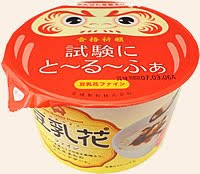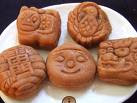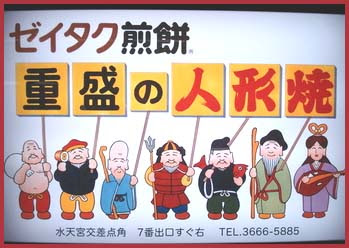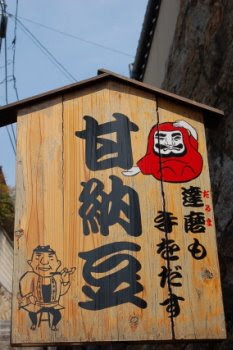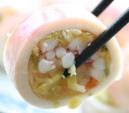[ . BACK to WORLDKIGO TOP . ]
::::::::::::::::::::::::::::::::::::::::::::::::::::::::::::::::::::::::::::::::::::::::::::::::::::
Bread (pan) Brot
***** Location: Japan
***** Season: Topic
***** Category: Humanity
*****************************
Explanation
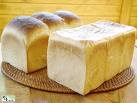
Bread in Japan usually referst to the white
toast, toosuto トースト .
. . . CLICK here for Photos !
Just as we have maschines to have your rice cooked ready for breakfast, there are also bread maschines available to have your bread ready.
seipanki 製パン器 bread maschine. Brotmaschine
. . . CLICK here for Photos !
PAN, from the portugese, who introduced bread baking more than 400 years ago. Now there are a few German bakeries in the cities.
Kimura Yasubei 木村安兵衛 began baking bread around 1871 and even baked for Emperor Meiji. Kimuraya 木村屋.
But bread was more a kind of confection, o-kashi and not a staple dish replacing rice at that time.
pan no hi パンの日 day of bread - April 12
When the first bread was baked in the home of Egawa family 太郎左衛門 near Nirayama, Izu 韮山, in 1840.
It was very hard and durable, as food provisions for the soldiers, and called
hyooroo pan 兵糧パン.
It was baked in oil in a huge iron pan in the main kitchen of the large Egawa estate. The Egawa family is now in the 42th generation.
The Chinese Opium War has just started and Japan was afraid foreighn soliers might come to Japan too. So the nation prepared for war.
The Egawa family also build small cannons to defend their harbour in Izu.
Egawa Hidetatsu Tarōzaemon (江川英龍太郎左衛門, June 23, 1801 - March 1, 1855)
was a Japanese Bakufu intendant of the 19th century. He was Daikan, in charge of the domains of the Tokugawa shogunate in Izu, Sagami and Kai Provinces during the Bakumatsu period.
© More in the WIKIPEDIA !
. Egawa Tarozaemon - Introduction .
- Egawachoo 江川町 Egawa Cho District, Tokyo
::::::::::::::::::::::::::::::::::::::::::::::::::::::::::::::::::::::::::::::::::::::::::::::::::::
 sandwich plate
sandwich plate
:::::::::::::::::::::::::::::::::::::::::::::::::::::::::::::::::::::::::::::::::::::::::::::::::::::
pan no kanzume パンの缶詰
canned bread
sold at vending maschines. It stays fresh for three years.
Wiht flavors of raisin and fruit, coffe, chocolate chips or fruits and nuts.
. . . CLICK here for Photos !
doitsu pan ドイツパン German bread
furansu pan フランスパン French bread
bagetto pan バゲットパン baguette
.................................................................................
karee pan カレーパン with curry inside
. . . CLICK here for Photos !
karee カレー curry and many curry dishes

shijimi karee pan しじみカレーパン
bread (or rather bun) with
shijimi corbicula extract and curry flavor
The bread is rather dark, sometimes called BLACK (kuro), when extra charcoal is added.
. WASHOKU
Shijimi and Lake Shinjiko 宍道湖, Matsue, Shimane
.................................................................................
shokupan 食パン "bread to eat"
. . . CLICK here for Photos !
tennen koobo pan 天然酵母食パン with natural yeast
:::::::::::::::::::::::::::::::::::::::::::::::::::::::::::::::::::::::::::::::::::::::::::::::::::
According to the form, there are two varieties
kakupan 角パン "bread like a square"
yamapan 山パン "bread like a mountain", oblong
角形 山形 パン
. . . CLICK here for Photos !
kakushoku pan 角食パン "Kakushoku"
square toast bread for breakfast in Hokkaido
::::::::::::::::::::::::::::::::::::::::::::::::::::::::::::::::::::::::::::::::::::::::::::::::::::
 A pan Aパン
A pan Aパン type of Krebbel donut from Okinawa
A fried bread dumpling, covered with rice flour, inside is red bean paste and a small mochi.
A stands for ANKO, sweet red bean paste.
The same bakery also "C pan" C パン", filled with curry.
anbataasando, an bataa sando アンバターサンド buttered sandwich with
anko sweet bean paste filling
. . . CLICK here for Photos !
also piinatsu bataa sando ピーナツバターサンド buttered sandwich with peanut butter
Aomori
Belegtes Brot (Weissbrot) mit Butter und anko paste.
sandoitchi サンドイッチ sandwich
Daruma pan だるまパン Daruma bread
.................................................................................
gohanpan, gohan pan ごはんパン
"bread with rice"
Sometimes this refers to bread baked with rice flour.
But there is a bakery in Chichibu, using the good local
"
kogane no mizu" 黄金の水 mountain water from upper river Tamagawa, to cook rice. The rice is then wrapped in bread dough and topped with some salmon flakes or other things you put on o-nigiri ! The whole thing is baked in the oven.
The locals have dug a well to get the water from the depth, near the statue of some Jizo. And you can buy a key to open the water tap for your private use.
. . . CLICK here for Photos !
WASHOKU
Gopan Bread Maker (ゴパン) Rice Bread Cooker ライスブレッドクッカー
From Sanyo
.................................................................................
 Jizoo Pan 地蔵パン small bread in the form of Jizo Bosatsu
Jizo Pan
Jizoo Pan 地蔵パン small bread in the form of Jizo Bosatsu
Jizo Pan
Made in a bakery in Sugamo ward, Tokyo, and some others.
Click the thumbnail to see more.
Jizo Bosatsu (Kshitigarbha) 地蔵菩薩
 mochimochi mushipan
mochimochi mushipan "もちもち蒸しパン"
steamed bread, very soft
"mochi mochi" indicates the softness of mochigome glutinous rice for buns.
It comes in various flavors, for example cheese or caramel
:::::::::::::::::::::::::::::::::::::::::::::::::::::::::::::::::::::::::::::::::::::::::::::::::::

raamenpan, raamen pan ラーメンパン
ramen bread, Ramen Pan
A round bread (like the soup bowl) filled with ramen noodles, chaashu pork meat, menma vegetables and an egg. The soup-flavor is put around the noodles, and there is no soup fluid in the dish, only the taste of it.
It is made by a bakery in Tokyo, which produces different kinds of bread, some looking like
sushi pan 寿司パン
rolled sushi bread
. . . CLICK here for Photos !
:::::::::::::::::::::::::::::::::::::::::::::::::::::::::::::::::::::::::::::::::::::::::::::::::::
koyuki komugi こゆき小麦 "komugi"-type wheat
This is a special type that yields very soft and fluffy bread. The bread is sold in Tokyo.
国産小麦の「コユキコムギ」koyuki winter wheat from Iwate prefecture
Triticum aestivum L
CLICK here for PHOTOS !
:::::::::::::::::::::::::::::::::::::::::::::::::::::::::::::::::::::::::::::::::::::::::::::::::::
panko (パン粉) breadcrumbs
for a crunchy coating for fried foods such as tonkatsu. Made from bread without crust.
. . . CLICK here for Photos !
Semmelbrösel, Paniermehl
:::::::::::::::::::::::::::::::::::::::::::::::::::::::::::::::::::::::::::::::::::::::::::::::::::
pan with a sweet filling
anpanman アンパンマン Mister Anpan Anpanmanl (Ampanman)
chikuwa pan ちくわパン with fish paste
karintoo pan かりんとうパン karinto brown sugar
kuriimu pan クリームパン cream
meron pan メロンパン melon bread
miruku pan ミルクパン milk brad
Snowman Daruma as Bread ゆきだるまパン
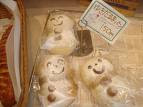

 *****************************
Worldwide use
*****************************
Worldwide use
Brot, Weissbrot, Schwarzbrot, Vollkornbrot, Toast, Toastbrot
Roggenbrot, Schrotbrot, Hefebrot,
Brötchen, Hefe
*****************************
Things found on the way
karintoo 花林糖 Karinto, fried dough cake

Jindaiji Daruma Karinto 深大寺だるまかりんと
. Daruma and Temple Jindai-ji 深大寺の達磨市 .
*****************************
HAIKU and SENRYU
Bread (pan) Haiku Topic Worldwide
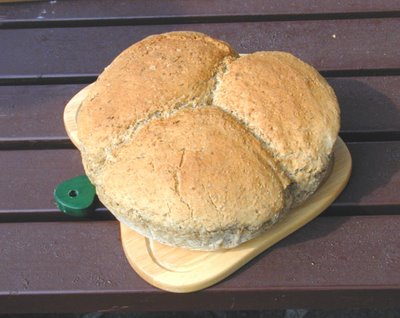 焼きたてのパンの匂いや! 梅雨晴れ間
the smell of
焼きたてのパンの匂いや! 梅雨晴れ間
the smell of
freshly baked bread -
a break in the rainy season
Gabi Greve, Summer 2006
:::::::::::::::::::::::::::::::::::::::::::::::::::::::::::::::::::::::::::::::::::::::::::::::::::::
パンにバタたつぶりつけて春惜しむ
pan ni bata tappuri tsukete haru oshimu
bread with
a lot of butter ...
lamenting spring
KUBOTA MANTARO 久保田万太郎
::::::::::::::::::::::::::::::::::::::::::::::::::::::::::::::::::::::::::::::::::::::::::::::::::::
焼きたてのパンの百態しぐれけり
yakitate no pan no hyakutai shigurekeri
freshly baked
bread in one hundred shapes -
icy drizzle
Hirasawa Yooko 平沢陽子
::::::::::::::::::::::::::::::::::::::::::::::::::::::::::::::::::::::::::::::::::::::::::::::::::::
春満月山崎パンは半額に
haru mangetsu yamazaki pan wa hangaku ni
spring full moon
a loaf of Yamazaki bread
at half price
Tr. Fay Aoyagi
Murakoshi Atsushi 村越敦
Fay’s Note:
Yamazaki Bakery is one of the major brand in Japan (I will say ‘equivalent to Wonder Bread here in the U.S.”).
 *****************************
Related words
*****************************
Related words
*****
WASHOKU : General Information
:::::::::::::::::::::::::::::::::::::::::::::::::::::::::::::::::::::::::::::::::::::::::::::::::::
